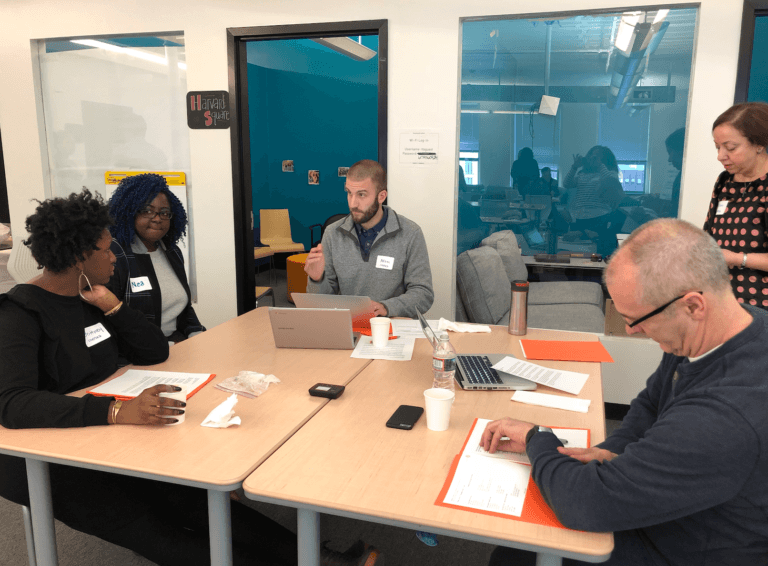5 Resources That Will Help Bring Your School Design to Life
Here are 5 of some of the most eye-opening resources that are jam-packed with interesting learnings on school design.

PHOTO COURTESY OF SPRINGPOINT
We’re trying something new! Every other edition of Give Me Five will deep dive into a specific subject. This month’s theme is School Design. So, we brought you five of some of the most eye-opening resources that are jam-packed with interesting learnings on that very subject.
Next month’s theme is the first of XQ’s School Design Principles: Strong Mission & Culture. Scroll down to this issue’s XQ X-tra to learn more and if you’d like to share your insight on the subject with the XQ fam.
1. REASON: Behind The Decision-Making Process
Whether you’re building a new school from scratch or redesigning an existing school’s approach, there are so many decisions that need to be made along the way. Sometimes, it feels like uncharted territory. We’re happy to tell you—it’s not. In fact, what if we told you those who charted similar territory left behind a roadmap? Explore this resource based on interviews and insights from 100+ education leaders, and learn how to lead system change in a way that maximizes benefits to teachers and students. You’ll get tips like this:
Share more failures—while we consistently call for students to be open about their failures, we struggle to do it ourselves.
2. PUSH: Beyond School Boundaries, Literally
Círculos rethinks high school by focusing on place-based learning. Students are always on the move and learning from projects with business owners or community leaders. Ultimately, they’re making connections with the people who will one-day open doors or give the advice that gets them where they want to go. And while this all sounds great in theory, place-based learning comes with several logistical demands. So where did the leaders of this innovative school in Santa Ana Unified School District begin, and how can that help school designers and redesigners everywhere? Here:
- Hiring practices that reflect Círculos’ values
- Ensuring students are regularly engaged
- Giving students opportunities to reflect with each other
“…in order for students to break out of the cycle of inter-generational poverty, they need access to social capital beyond what the school can offer.” – drop by Daniel Allen, Círculos, Executive Director
3. COLLAB: Two Heads Are Better Than One
Designing a school is tough. That’s why it’s so important to learn from one another along the way. When two high school principals went on a learning tour of each other’s schools, they were able to bring back new ideas they could apply and adapt back at their home base. Here are some of those ideas:
- Include students in the design process and empower their voice as a tool for insight
- Understand how students feel when experiencing both successes and challenges
- Always ask: Is what we’re doing in students’ best interest?
4. WALK: A Mile in Someone Else’s Shoes
You can’t understand someone until you’ve walked a mile in their shoes. That’s why experts suggest that creating a more equitable school environment starts with understanding. Can you say you truly understand the identities, experiences, and biases that influence yourself, your students, and your school colleagues? Trust us; if you’re serious about school design, you’ll want to try this thought-provoking yet refreshing toolkit of practices and activities that help you answer that question.
Pro tip: Print this toolkit on a deck of 3X5 index cards.
5. LISTEN: School Design is About Problem-Solving
The Mastery School of Hawken is a new high school getting ready to open its doors next fall. And they’re documenting their journey through a podcast called, “Redesign School.” Check out the episode, “So, You Want to Build a School,” where the Head of School speaks about some of the problems they wanted to solve by opening this forward-thinking school. They also talk about the challenges they faced along the way, while also talking through solutions. So, why do we love their school idea so much? Because it’s based on this idea: Organize a high school around things that help students find a sense of purpose and meaning.
Pro tip: To skip the banter and get to the meat begin at [04:52].
XQ X-tra
There’s no “right way” to #ReThinkHighSchool
But, the most effective high schools do share six common elements. We call them the XQ School Design Principles. They help school designers and rethinkers push themselves to be both disciplined and imaginative—to put new ideas on the table without losing sight of the essential components of what they need to accomplish.









